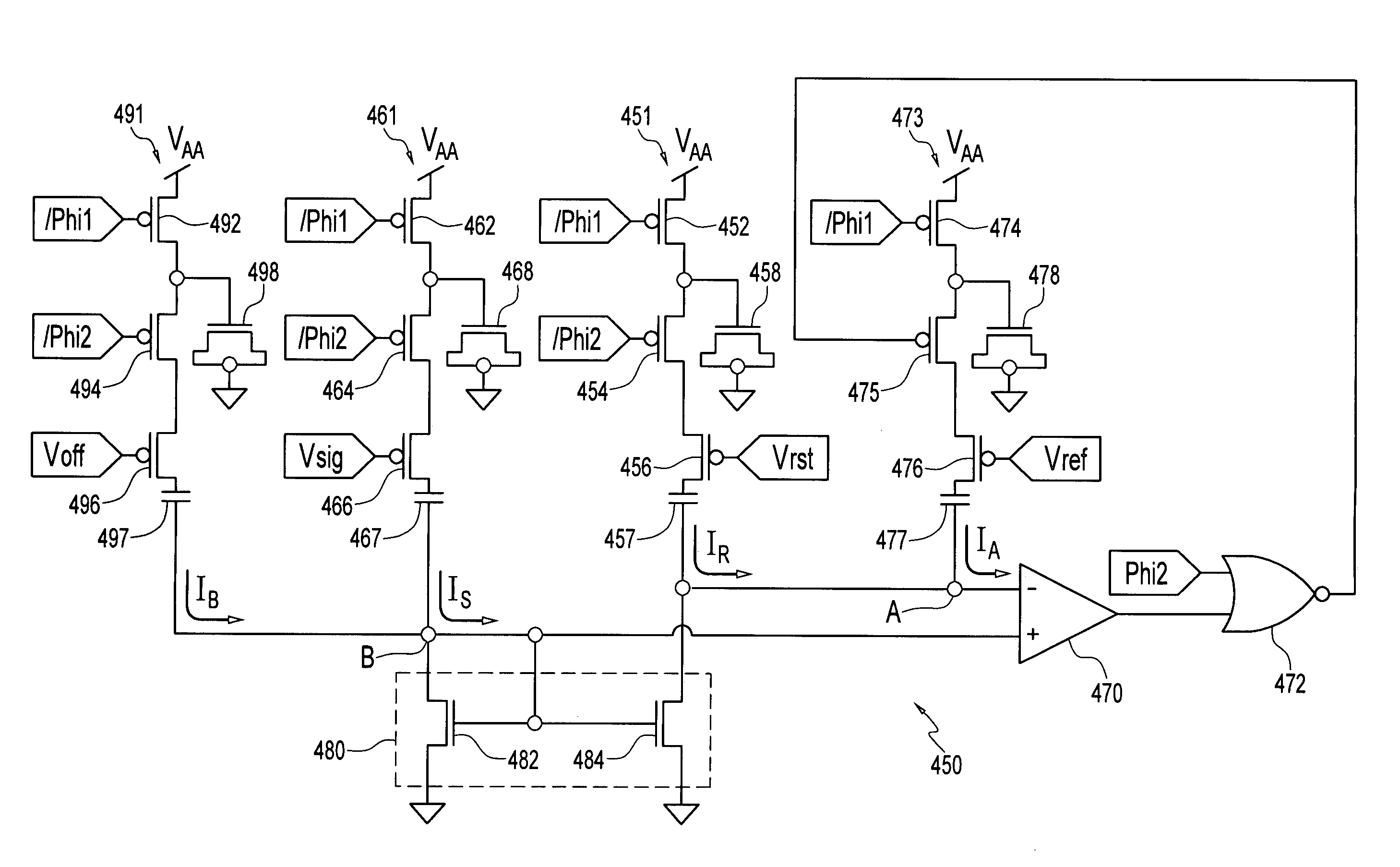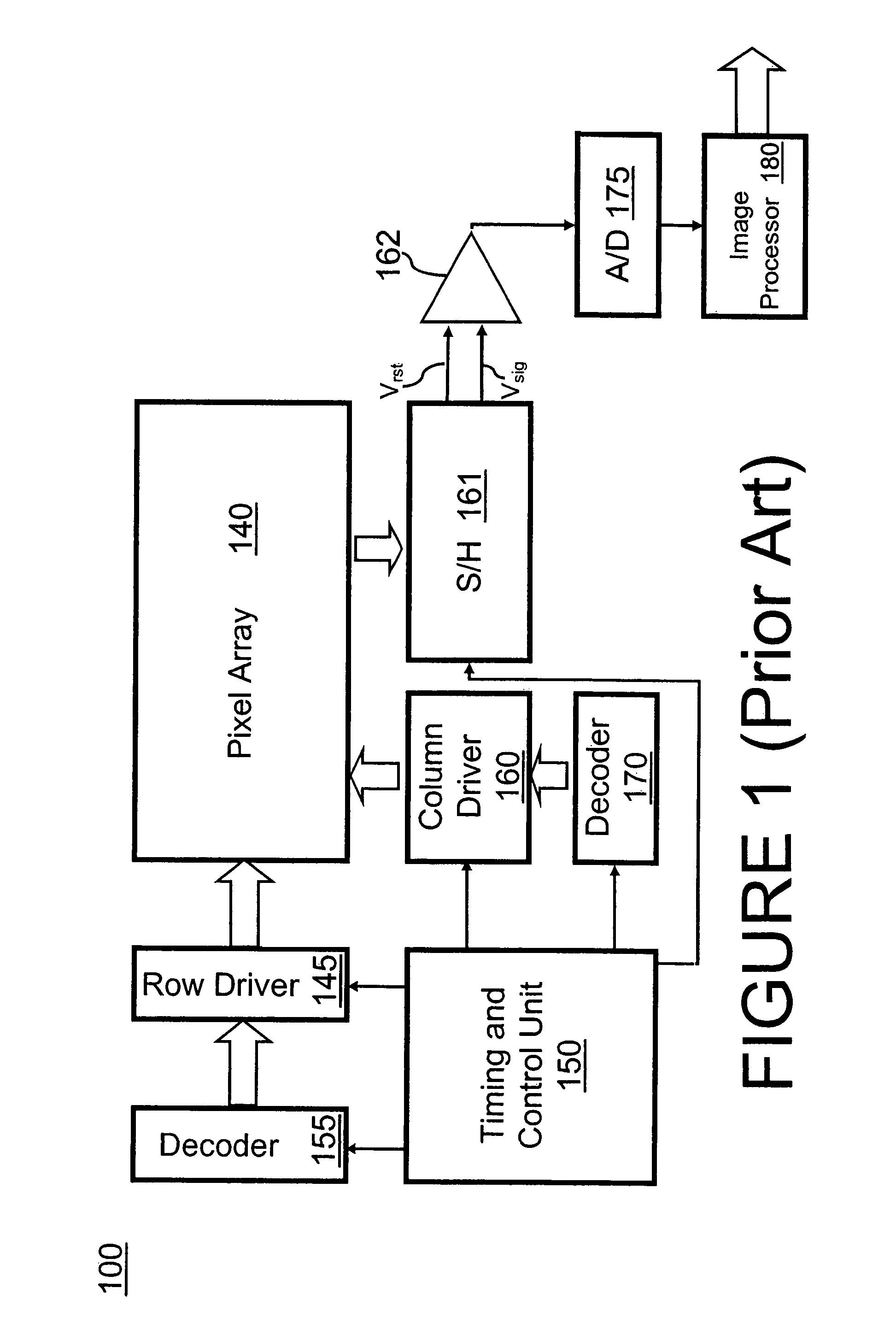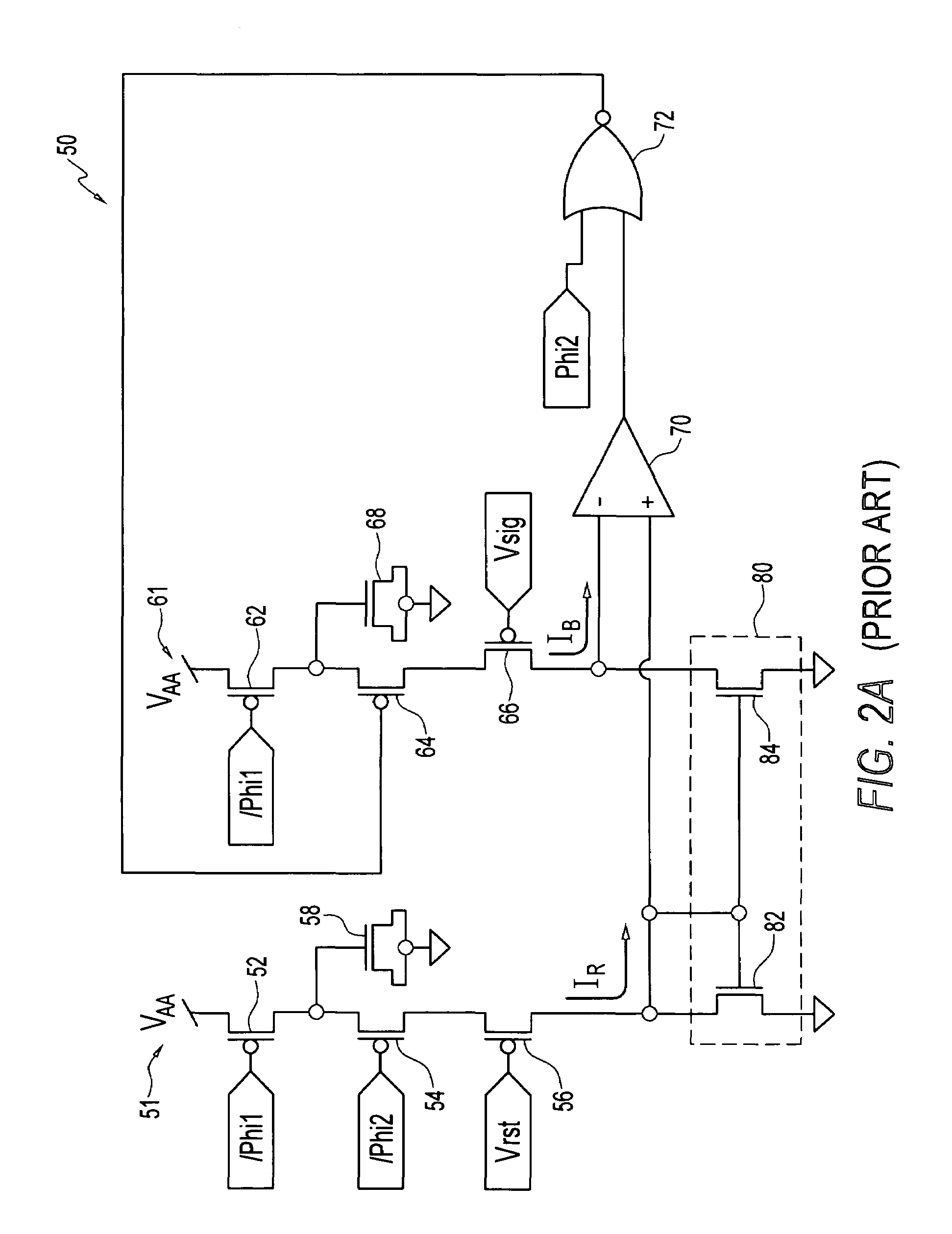Column-parallel sigma-delta analog-to-digital conversion with gain and offset control
a digital converter and gain control technology, applied in the field of column-parallel sigma-delta analog-to-digital converters, can solve problems such as noise and adverse effects on voltages
- Summary
- Abstract
- Description
- Claims
- Application Information
AI Technical Summary
Problems solved by technology
Method used
Image
Examples
Embodiment Construction
[0028]One method of improving upon the conventional sensing circuit sigma-delta analog-to-digital converter of FIGS. 2A and 2B is presented in U.S. patent application Ser. No. 11 / 106,465, filed Apr. 15, 2005. The '465 method is also demonstrated in FIGS. 3A and 3B. FIG. 3A depicts a sensing circuit 250 and FIG. 3B depicts a sigma-delta analog-to-digital converter 300 that includes sensing circuit 250. The sensing circuit 250 comprises a first branch 251 for sensing the reset signal Vrst from a sample and hold capacitor (not shown), a second branch 261 for sensing the pixel signal Vsig from another sample and hold capacitor (not shown) and a regulation branch 273. The sensing circuit 250 also comprises a current mirror 280, a comparator 270 and a NOR gate 272. The comparator 270 is preferably a regenerative latch type comparator, where the digital output is synchronized to the phase clocks.
[0029]The first branch 251 comprises three PMOS transistors 252, 254, 256 and a capacitor 258. ...
PUM
 Login to View More
Login to View More Abstract
Description
Claims
Application Information
 Login to View More
Login to View More - R&D
- Intellectual Property
- Life Sciences
- Materials
- Tech Scout
- Unparalleled Data Quality
- Higher Quality Content
- 60% Fewer Hallucinations
Browse by: Latest US Patents, China's latest patents, Technical Efficacy Thesaurus, Application Domain, Technology Topic, Popular Technical Reports.
© 2025 PatSnap. All rights reserved.Legal|Privacy policy|Modern Slavery Act Transparency Statement|Sitemap|About US| Contact US: help@patsnap.com



